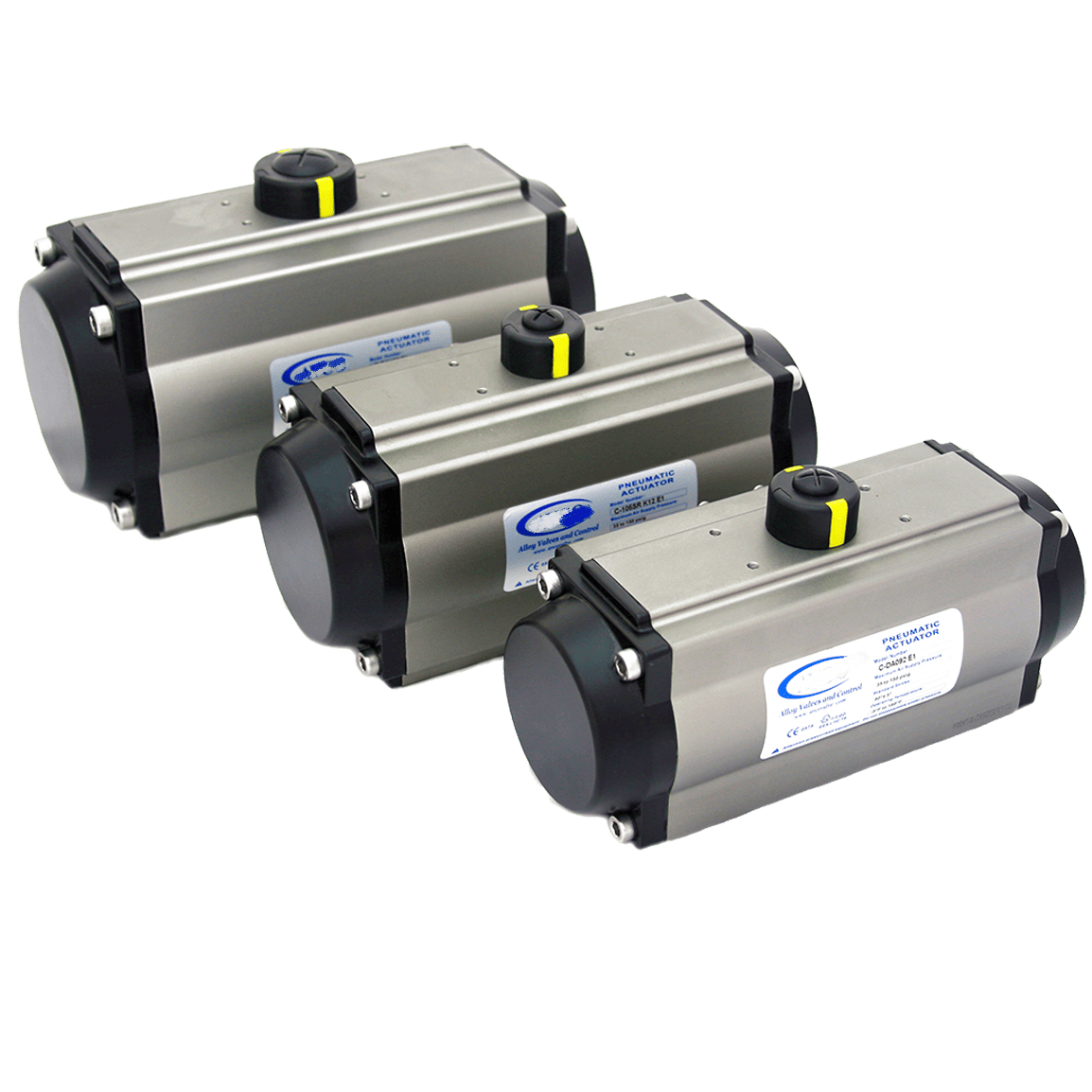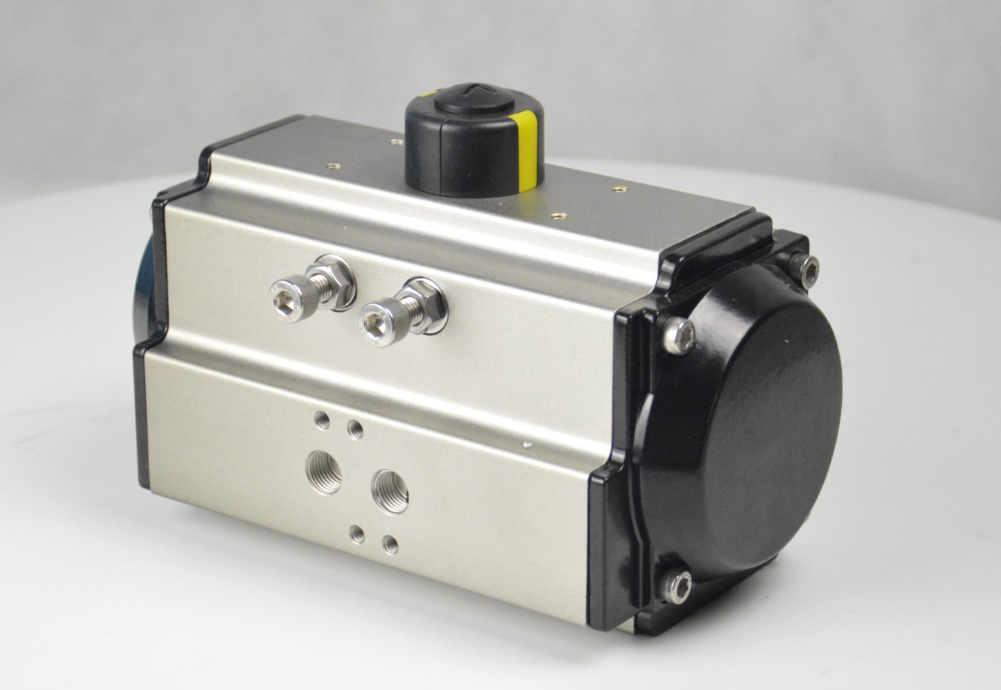
Pneumatic actuators are essential components in modern automation systems, converting compressed air into mechanical motion to control valves, dampers, and other mechanical devices. Their ability to provide rapid and reliable motion makes them invaluable across various industries, from manufacturing to aerospace.
A pneumatic actuator is a device that utilizes compressed air to produce linear or rotary motion. By channeling pressurized air into a chamber, the actuator generates force that moves a piston or diaphragm, translating air pressure into mechanical work. This mechanism allows for precise control of mechanical systems without the need for manual intervention.

The operation of a pneumatic actuator involves several key components:
Compressed Air Supply: Air is compressed and stored in a reservoir, ready to be directed into the actuator.
Control Valve: Regulates the flow of compressed air into the actuator's chamber.
Actuator Chamber: Houses a piston or diaphragm that moves in response to air pressure.
Mechanical Output: The movement of the piston or diaphragm is transferred to a mechanical component, such as a valve stem or rotary shaft.
When compressed air enters the chamber, it exerts pressure on the piston or diaphragm, causing it to move. This movement is then used to perform mechanical work, such as opening or closing a valve. The direction and extent of movement can be controlled by adjusting the air pressure and flow.
Pneumatic actuators come in various designs, each suited to specific applications:
These actuators produce straight-line motion and are commonly used in applications requiring linear displacement.
Single-Acting Cylinders: Utilize air pressure to move the piston in one direction, with a spring returning it to the original position.
Double-Acting Cylinders: Use air pressure to move the piston in both directions, allowing for more precise control.
Designed to produce rotational motion, these actuators are ideal for applications requiring angular displacement.
Vane-Type Actuators: Use a vane attached to a shaft within a chamber; air pressure causes the vane to rotate the shaft.
Rack and Pinion Actuators: Convert linear motion of a piston into rotary motion using a rack and pinion mechanism.
These actuators use a flexible diaphragm instead of a piston to convert air pressure into mechanical motion. They are often used in control valve applications due to their sensitivity and precision.
Rodless cylinders provide linear motion without an external piston rod, making them suitable for applications with space constraints.
Pneumatic actuators offer several benefits that make them a preferred choice in many industrial applications:
Simplicity and Reliability: With fewer moving parts, pneumatic actuators are less prone to mechanical failure.
Speed: They can achieve rapid movement, making them ideal for high-speed operations.
Safety: Pneumatic systems are generally safer in hazardous environments, as they do not involve electricity or flammable fluids.
Cost-Effectiveness: Compressed air is often readily available in industrial settings, reducing operational costs.
Clean Operation: Pneumatic systems do not produce contaminants, making them suitable for cleanroom and food processing environments.
Pneumatic actuators are utilized across a wide range of industries due to their versatility and efficiency:
In automotive manufacturing, pneumatic actuators are used for:
Engine Control: Managing throttle and valve operations.
Transmission Systems: Assisting in gear shifting mechanisms.
Braking Systems: Enhancing brake actuation in heavy vehicles.
Pneumatic actuators facilitate automation in manufacturing processes by:
Material Handling: Moving products along conveyor systems.
Packaging: Operating machinery for sealing and labeling.
Robotics: Providing motion in robotic arms for assembly tasks.
In aerospace applications, pneumatic actuators contribute to:
Flight Control Systems: Adjusting control surfaces like flaps and rudders.
Landing Gear Operations: Extending and retracting landing gear assemblies.
Pneumatic actuators are ideal for food processing due to their clean operation:
Processing Equipment: Controlling mixers, slicers, and conveyors.
Packaging Machinery: Operating filling, sealing, and labeling machines.
In heating, ventilation, and air conditioning systems, pneumatic actuators:
Control Dampers: Regulate airflow within ducts.
Operate Valves: Manage the flow of heating or cooling fluids.
Choosing the right pneumatic actuator involves considering several factors:
Load Requirements: Determine the force needed to move the load.
Stroke Length: Assess the distance the actuator needs to travel.
Speed: Consider the required speed of operation.
Environmental Conditions: Evaluate factors like temperature, humidity, and exposure to corrosive substances.
Space Constraints: Ensure the actuator fits within the available space.
Maintenance Needs: Consider the ease of maintenance and availability of spare parts.
Regular maintenance ensures the longevity and reliability of pneumatic actuators:
Inspection: Regularly check for air leaks, wear, and damage.
Lubrication: Ensure moving parts are adequately lubricated.
Seal Replacement: Replace worn or damaged seals promptly.
Filter Maintenance: Keep air filters clean to prevent contamination.
Common issues and their remedies include:
Air Leaks: Tighten fittings and replace damaged seals.
Slow Operation: Check for obstructions and ensure adequate air pressure.
Erratic Movement: Inspect control valves and air supply consistency.
Advancements in technology are shaping the future of pneumatic actuators:
Integration with IoT: Smart actuators with sensors for real-time monitoring and diagnostics.
Energy Efficiency: Development of actuators that consume less air and reduce energy costs.
Miniaturization: Creation of compact actuators for use in small-scale applications.
Enhanced Materials: Use of advanced materials for improved durability and performance.
Pneumatic actuators are integral to modern automation, offering a reliable and efficient means of converting compressed air into mechanical motion. Their diverse applications across industries underscore their importance in enhancing productivity and operational efficiency. As technology evolves, pneumatic actuators will continue to adapt, incorporating smart features and improved designs to meet the growing demands of various sectors.